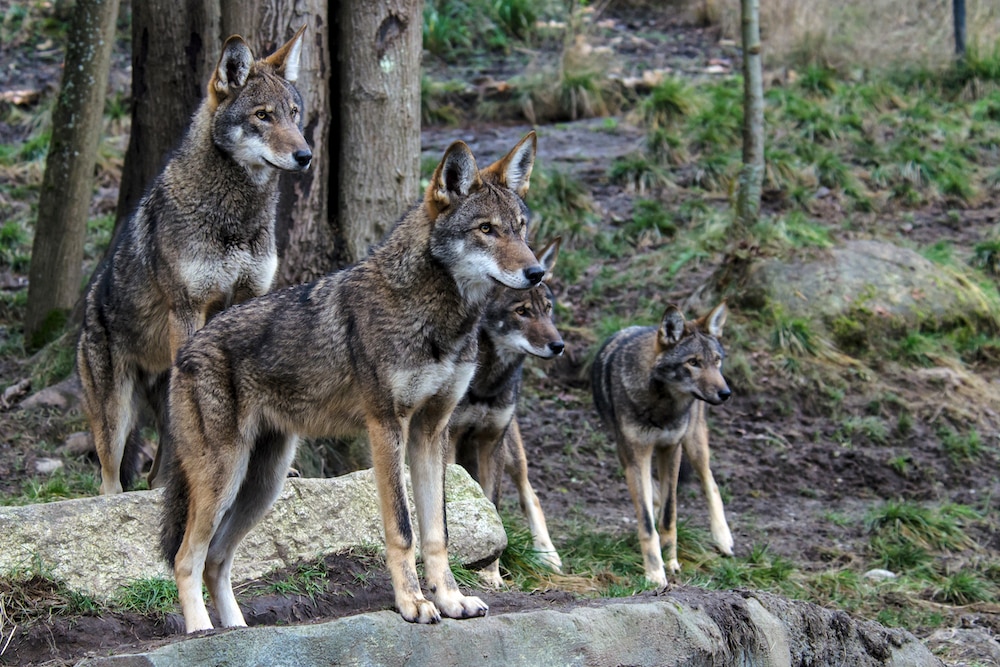Create a free profile to get unlimited access to exclusive videos, sweepstakes, and more!
Red wolves could be saved from extinction by “ghost DNA” in hybrid coyotes
This is the ultimate genetic insurance policy.

Our history and folklore are filled with stories of people who, through some misadventure or through inheritance, became hybrid creatures, part human and part wolf. In the TV series Wolfblood (now streaming on Peacock!), a group of individuals appear human on the surface but secretly harbor traits of wolves and can shapeshift at will.
Of course, there’s no scientific basis for werewolves, but recent research has revealed that wolf blood — or rather, their DNA — is hiding out in non-wolf species, and it could be the key to saving one species from the brink of extinction.
Bridgett von Holdt from the Department of Ecology & Evolutionary Biology at Princeton University, Kristin Brzeski from the College of Forest Resources and Environment Science at Michigan Technical University, and colleagues recently surveyed populations of hybrid coyotes and found that some of them are more wolf than anything else. Their findings were published in the journal Science Advances.
Red wolves have been undergoing a slow decline for decades. The last known wild individuals were collected in 1980 and brought into a managed captive breeding program. At the time, there were only 14. Today, there are approximately 241 red wolves, all of which are descended from those original founders. That steep population bottleneck constricted the genetic variation in the species to what was present in those who successfully reproduced in captivity. Despite their moderate recovery since then, there is significant risk that they don’t have the diversity needed for long-term survival. Coyote-red wolf hybrids might be able to widen that bottleneck.
“A while ago I received communication from people in Galveston, Texas with an interest in their coyotes. They thought there was something kind of unique and different about their animals. It became clear to me there was something interesting, but I didn’t know what it was,” vonHoldt told SYFY WIRE.
From there, scientists began a larger geographic study, looking at the coyote genome along the Gulf Coast of the United States. Much of that was initially carried out through roadkill samples sent in from interested individuals. Later, the team embarked upon a targeted survey in Louisiana to look not just at the DNA of the coyotes living there, but also the landscape they call home. The findings were varied, with some coyotes having very little red wolf DNA, while others were practically bursting with it.
“In some animals we see very little red wolf ancestry, like 2%. More recently, we’ve come across some animals with as much as 70% of their genome coming from the red wolf. We’re looking at lots of different animals and trying to get a sense of if there are geographic hot spots with really high red wolf ancestry,” vonHoldt said.
When scientists looked at the genetic data, they were also able to determine that hybridization was a relatively recent occurrence and may have been driven by the declining red wolf population in the wild. That said, because hybridization pre-dated the total population bottleneck, some hybrid animals are carrying genetic variation which is no longer present in red wolves. These bits of DNA are known as ghost alleles, pieces of red wolf DNA which are preserved only in hybrids.
“There’s potentially lost red wolf ancestry in these admixed coyotes that was lost from the red wolf due to this huge population decline and bottleneck. There’s really important potential conservation value to these admixed coyotes in that they can harbor genetic variation that is extinct in the contemporary red wolf,” Brzeski said.
It’s unclear precisely how these ghost alleles might eventually be used in conservation efforts, but scientists are taking steps to preserve it. They’ve started biobanking tissue samples to maintain the genetic variation in the event that future scientists determine the best way to incorporate it back into the red wolf population. One relatively easy way that might be accomplished is through selective breeding of contemporary red wolves with hybrid coyotes who have high levels of red wolf ancestry. Brzeski indicated she didn’t necessarily advocate for any particular strategy, but that the tools were available.
There might also be a more hands off approach revealed by the survey of admixed coyote hybrids in the area. Their relative success at surviving while maintaining high levels of red wolf DNA might suggest that certain areas are particularly well suited for the re-introduction of red wolves to the wild.
“Finding the environmental and social conditions that retain high red wolf ancestry without any real management could help the red wolves to persist,” Brzeski said.
What strategies are ultimately implemented will be the result of collaboration between scientists, conservationists, and government agencies tasked with the ongoing preservation of threatened and endangered species like the red wolf. One thing is certain, however, the blood of the red wolf is still going strong, and the future doesn’t look quite as bleak as it once did.


























